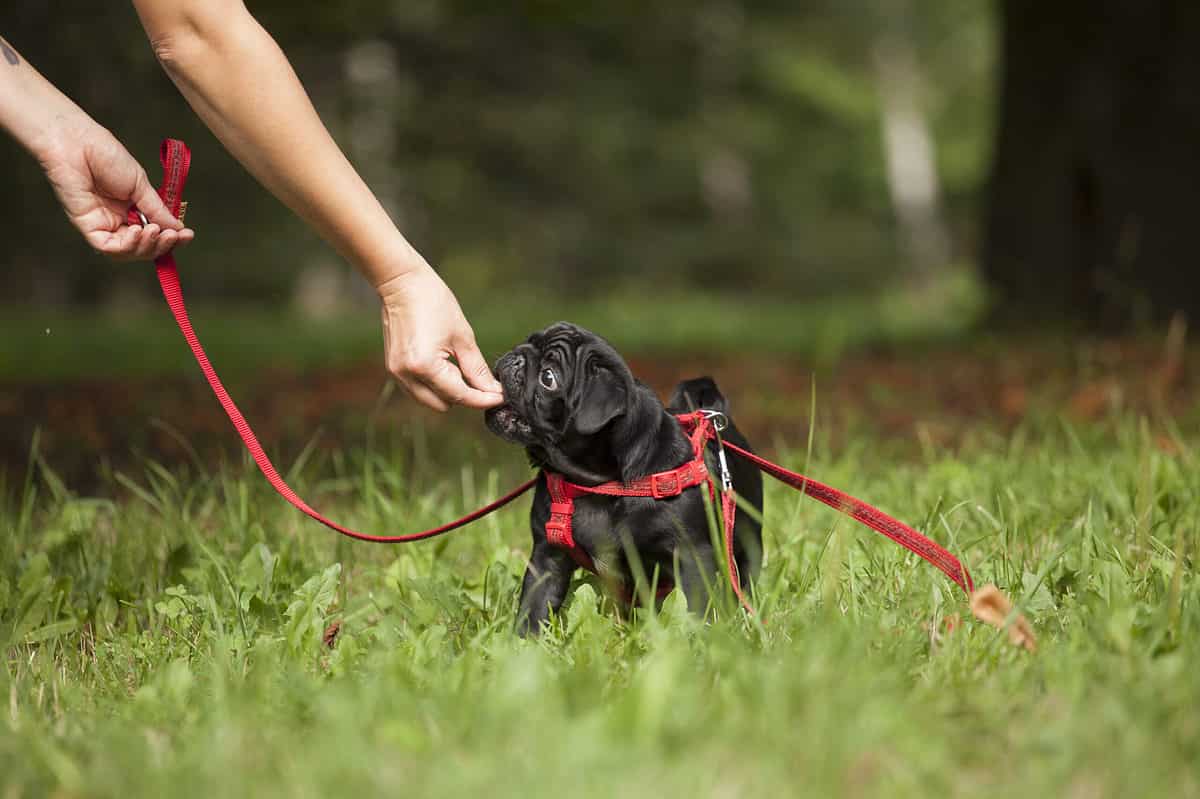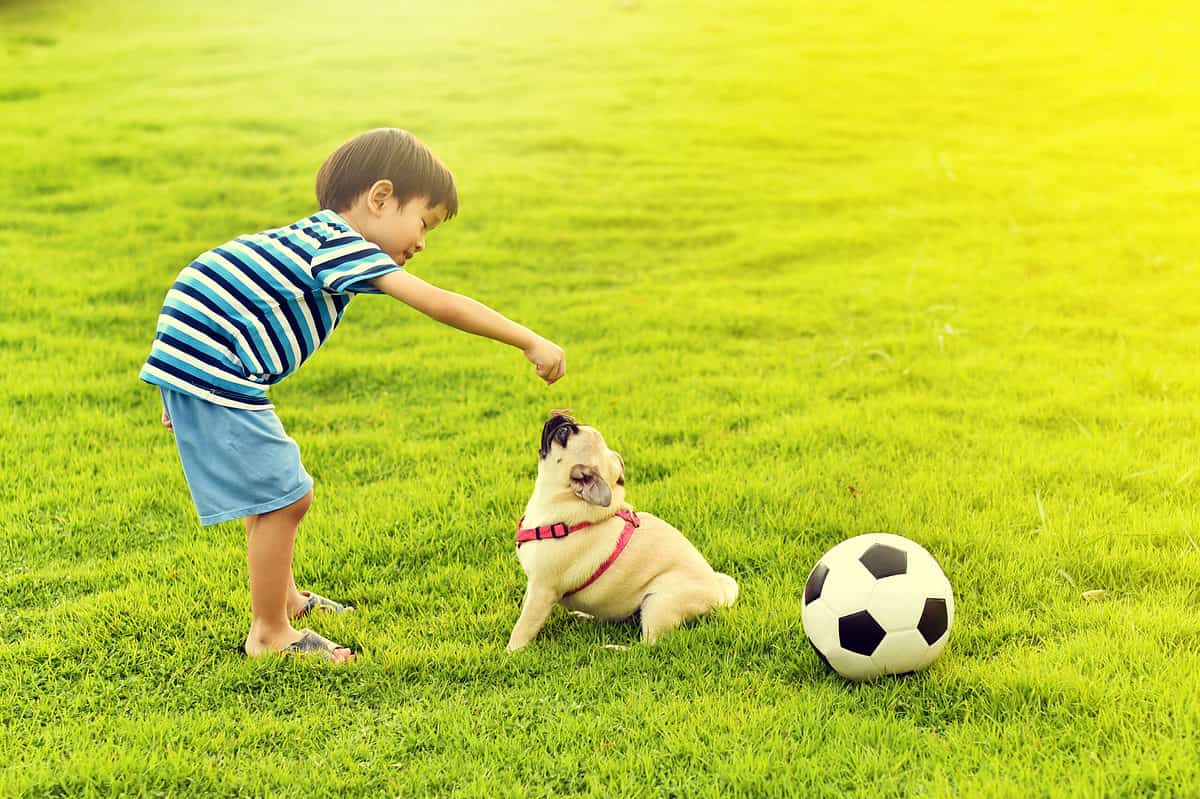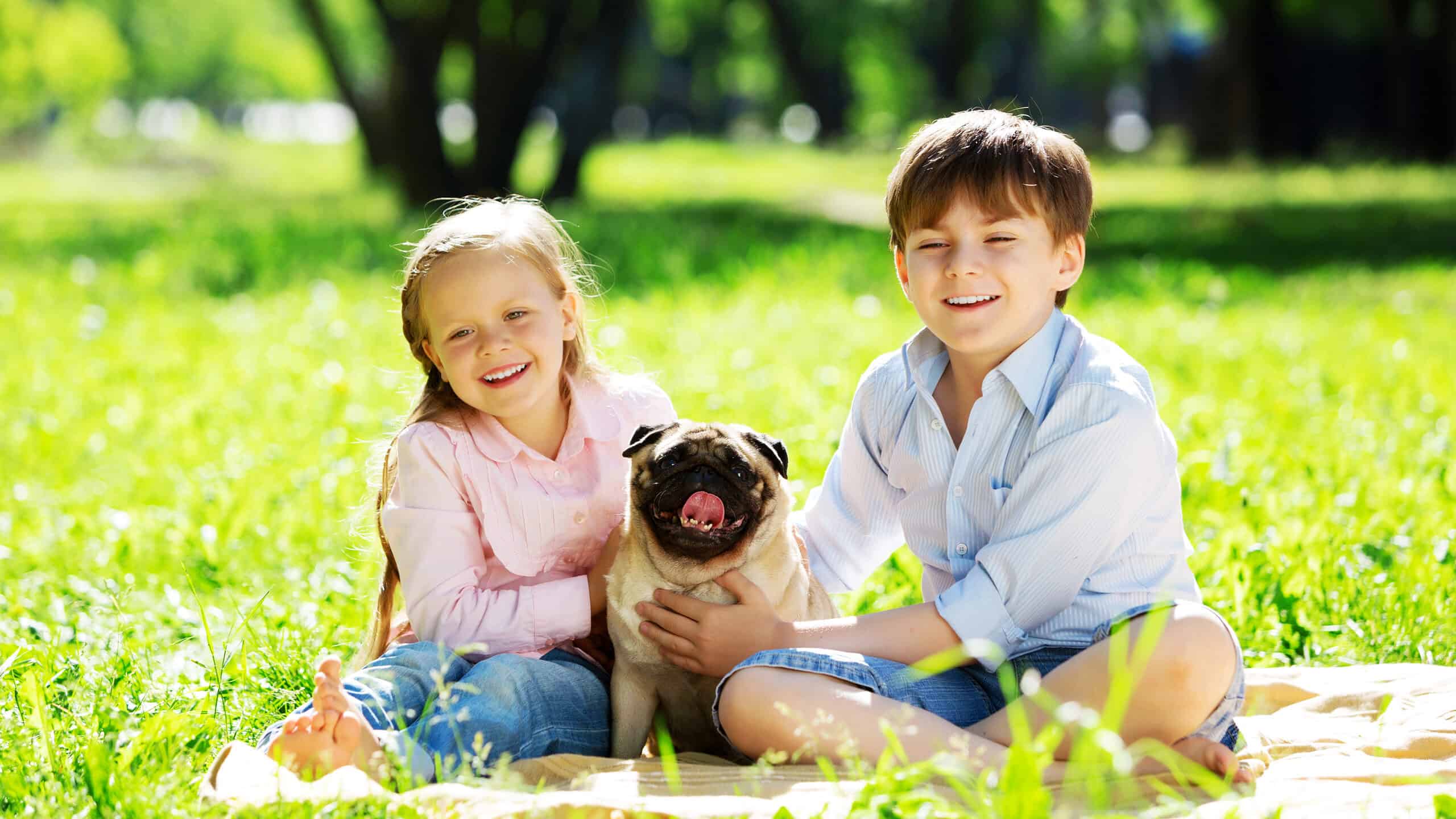Dogs can be a child’s best friend. As a result, plenty of parents are considering pugs as they’re a great dog of choice for most households. These cuddly, highly adaptable, full of character, and small-breed dogs can thrive in different environments. However, when you're thinking about making a pug an additional member of your family, it's reasonable to worry if they’ll get along with your children. Therefore, you need to ask questions to see if pugs are a great fit for your household with kids.
Pugs Personality
Reputable breeders bred pugs to be a pleasure and companion to their owners. They have great charm, temperaments, and an outgoing demeanor. They are highly sensitive, and though they can make for great household pets, it's not a good idea for your pug to be left home alone for hours. Although these dogs have a stubborn side, especially during house training, they’re playful and affectionate dogs. If you’re looking for an easygoing, loving friend, this breed may be for your household.
Pugs Training
One important tip for a well-behaved pug is to train it early. Pugs can learn a variety of tricks using positive reinforcement training, which will allow your pug to learn that positive techniques happen when they do something good. Break the training of your pug into goals to ensure a simple transition to setting your puppy up for success.
Goal #1: Teach Your Puppy To Know Their Name
The most important task in training your pug is to choose a name. In a happy voice, repeat it daily and immediately offer a toy or treat. Your pug will learn these positive tasks happen when it hears its name and comes to you.
Goal #2: Set A Schedule
Choose consistent times for sleeping, meals, training, playtime, and bathroom breaks.
Goal #3: House Train Your Pug
Your pug may already have some knowledge of potty and crate training, but you’ll need to prioritize these skills as soon as your puppy comes home. When your pug feels comfortable inside their crate, house training is quite easy.
Goal #4: Socialize Your Puppy To Animals, People, Places, And Situations
Pugs are outgoing, with an even-tempered and loving disposition. These are curious creatures who want to explore everyone and everything. The ideal time to introduce your pug to experiences, places, and people is during puppyhood. This is a great time for your young pug to feel comfortable with the world around them. To accomplish this milestone, invite friends and family to your home to meet your pug and take your puppy to any public place that allows dogs. Make sure the pavement and weather are cool as pugs can’t tolerate hot temperatures and humid environments.
Goal #6: Teaching Basic Commands
To get your dog’s attention, teach your pup commands such as “watch me”, “sit”, and “stay”. Use a clicker when your pug looks at you and give them a treat. At 16 weeks, pug puppies are ready to follow basic cues such as “sit down”, “leave it”, and “come” with positive reinforcement.
Goal #7: Leash Training
The principal task for leash training is to prevent your pug from pulling on the leash. Start with a loose leash and walk a few steps. Stop, click, say “good boy or girl” and give a treat.

©Rabsh/Shutterstock.com
Health Issues
Pugs are prone to many health problems, including ear, eye, and skin infections and breathing problems. Pugs need frequent ear cleanings, bathing, and expensive trips to the veterinarian. Invest in nutritionally balanced and healthy dog food to keep their weight in check. While pugs are low-maintenance dogs, it’s important to be aware of the signs and symptoms of the most common health issues which may affect your pug’s well-being. Respiratory issues, bone and joint problems, skin disorders, and eye infections are the main health issues owners should look out for ensuring prevention by frequent vet visits.
Are Pugs Hypoallergenic?
Pugs are a high-shedding breed. Therefore, pugs are not suitable for those with allergies.
Exercise
Your pug will need up to an hour of exercise a day, which includes shorter walks and extra playtime of mentally stimulating activities. Several daily short walks throughout the day can help to stop your plug from becoming too overheated or tired. Keep an eye out on your pug as they can tire easily from their difficulties in getting enough oxygen. As soon as you notice them struggling to breathe, stop and make sure they get enough rest. Avoid having your pug exercise in the heat, as this can cause even more problems since they are prone to heatstroke. In warm weather, plan to walk your pug early in the morning or later in the evening when it’s cooler. Keep an eye out for early signs of overheating so you can prevent the situation from getting worse.

©Jarun Ontakrai/Shutterstock.com
Life Expectancy
Pugs have an average life span of about 13 to 15 years. Like humans, female pugs live longer than their male pug counterparts. The average life expectancy for female pugs is 13.2 years, while males have a shorter life span of about 12.8 years.
Raising Infants And Toddlers Around Pugs
The naturally playful pugs make excellent dogs for kids of all ages. Not only are they quiet dogs that won’t scare children, but they’re gentle companions that understand the vulnerability of children. According to the American Temperament Test Society, the pug has a 92% pass rate on their temperament test, which means pugs are least likely to snap at kids or display unpredictable behaviors.
Pug Size
Pugs are members of the toy group with a range in height from 10 to 11 inches and a range in weight from 14 to 18 pounds.
Energy Level
Pugs aren’t high-energy dogs but require daily exercise. They need consistent socialization and training to make sure they are well-behaved.
Grooming Your Pug
Pugs are high-maintenance dogs regarding grooming. Your pug will need regular bathing, brushing, and cleaning around the nose and wrinkles. With pugs, their thick and double coat sheds frequently and holds odors. Their skin folds can quickly develop a buildup of debris and moisture, commonly leading to skin yeast infections, dry skin, and fold-over ears can become quickly dirty. Don’t forget dental care and nail trimmings.
Purchasing A Pug
The price of a Pug from a reputable breeder can range from $1,000-$6,000.
Conclusion
Are Pugs good for kids? The answer is yes. Their adaptable, calm, patient, and playful behavior and their small size make great pets for kids. Once you have a pug, you’re bound to have a devoted and affectionate companion for years.
The image featured at the top of this post is ©Sergey Nivens/Shutterstock.com.
